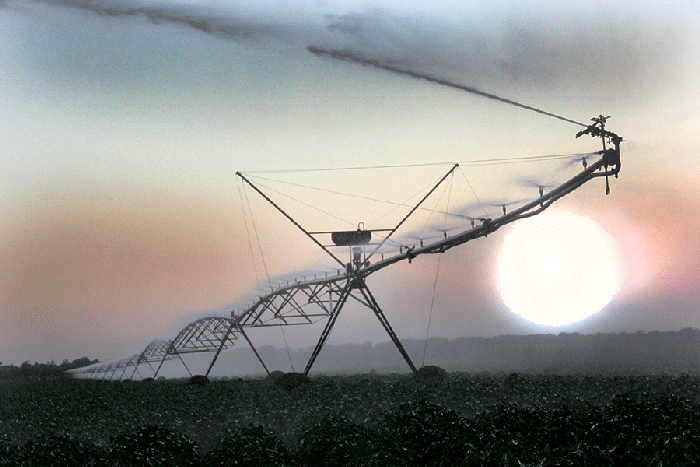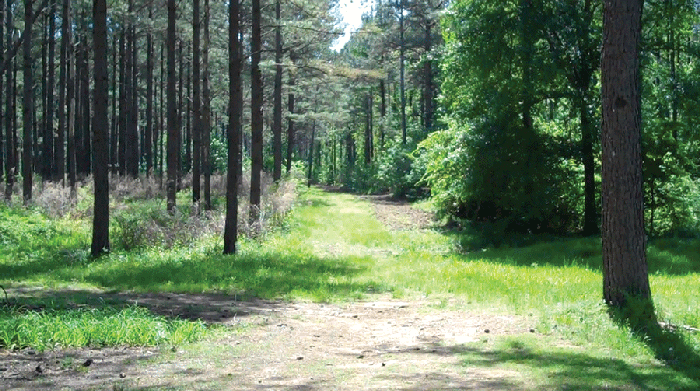
The average sale price for both irrigated and non-irrigated farm land in Mississippi changed little between 2016 and 2017, and rents continued to “modestly decline,” according to the Mississippi State University Agricultural Land Values and Credit Conditions Survey.
The survey was conducted in May by the MSU Department of Agricultural Economics and MSU Extension. Participants included agricultural lenders, appraisers, farm managers, and agricultural economists.
Row crop, pasture, and timberland sales values in the survey are for tracts where the highest and best use has not changed from agriculture, according to Dr. Bryon Parman, assistant Extension professor of agricultural economics, who compiled the report. “The values do not include agricultural land that has been sold with the intent of being developed for a different purpose.”
SALES/RENT TRENDS
Data from across the country show the number of cropland acres sold “is down sharply from just a few years ago,” Parman says. “That’s especially the case for the Plains states, where sales volume was down nearly 20 percent from 2016, and 36 percent from 2015. Anecdotal evidence and actual sales numbers from across Mississippi and the Mid-South follow a similar trend, with sales numbers falling in 2017.”
In some instances, he says, appraisers, brokers, and producers “had a difficult time finding land for sale in the Mid-South from the end of 2016 through the first half of 2017. Many believe the lack of total acres for sale reflects some renewed strength in the market, but another theory is that weakness in the land market has potential sellers reluctant to sell at prices being offered, or simply not listing their property over fears of having to settle for prices that are much lower than were common in 2014.”

Land values off the Delta are up nearly 9 percent from last year for dryland, and 2 percent for irrigated land.
Data from the Mississippi State University survey show sales prices “slightly elevated” over 2016, Parman says. “Land values off the Delta are up nearly 9 percent from last year for dryland, and 2 percent for irrigated land. Given that prices haven’t improved much over the previous two crop years for the common commodities grown in the region, it’s unlikely that increased profits are helping to prop up off-Delta farmland values. Rather, impatient buyers are offering prices above revenue potential to encourage the sale.”
Cash rents across Mississippi continue the downward trend that began in 2014, he says. “However, the precipitous drop from 2015 to 2016 hasn’t been as sharp moving into 2017. An excellent harvest season for grain and cotton producers in the fall of 2016 may have relieved some of the downward pressure on rents. Also, the decline from 2015 to 2016 of over 10 percent enabled some commodities, with yields on the high side of average, to cover operating and direct expenses at the 2016 cash rental rate. It will take another year to determine which of these scenarios is the correct one in explaining the changes in 2017.”
DELTA REGION
“Land sales values in the Delta were mostly flat between 2016 and 2017,” he says. “Delta dryland showed a slight 3 percent increase, while irrigated cropland remained the same as 2016.”
But he says, “The increase in dryland was modest, such that differences in the quality of farmland being sold relative to last year may account for the difference. Given national trends, it’s unlikely the increase represents the Delta region as a whole."

Irrigated land values showed almost no change from 2016, Parman says. “So, it’s possible that the average sales price for both non-irrigated and irrigated land hasn’t changed much in the last year.”
Sales of dryland in 2017 ranged from $2,500 per acre to $4,000, with an average of $3,287. Irrigated cropland sales ranged from $3,500 per acre to $5,500, averaging $4,453. Cash rents for dryland ranged from $85 per acre to $175, averaging $112. For irrigated land, the range was $140 per acre to $225, with an average of $172.
Rents for dryland dropped 4.4 percent from 2016, and irrigated land fell 2.3 percent. “While rents in the Delta declined less from 2016 to 2017 than they did from 2015 to 2016, they still mirror the national trend of declining cash rents for quality farmland,” he says. “A majority of the survey respondents expect rents to remain steady as we move into 2018. None of them expected rents to increase in the next year.”
NON-DELTA REGION
Sales of non-Delta dryland for 2017 ranged from $1,600 per acre to $3,000, averaging $2,625. Irrigated land ranged from $2,500 to $3,800, with an average of $3,119 per acre. Rents ranged from $50 to $245 per acre for dryland, averaging $78, while irrigated land rents ranged from $100 to $155, averaging $128.
“Most survey respondents believe rents will move downward in the next year,” Parman noted, “with 30 percent expecting them to remain constant.”
PASTURELAND VALUES/RENTS
Mississippi pastureland sales averaged $2,309 per acre in 2017, up from $1,923 the previous year. Based on dollars per animal unit, the price was $3,832, up from $3,205 in 2016. Cash rents were $28.33 per acre, a 10.5 percent drop from $31.63 in 2016; on a dollars per animal unit basis, the 2017 rent was $47.20, down 10.5 percent from $52.69 in 2016.
Asked about their expectations for pastureland rents, “75 percent indicated that they expect rents to fall in the next 12 months,” Parman says, “while 25 percent expect no change. With respect to pastureland sales value, 65 percent expect no change and 35 percent expect a decrease.”

Pastureland values across the state “have been volatile over the last three years,” he notes, “moving from $2,455 per acre in 2015 down to $1,803 in 2016, then back up to $2,309 in 2017. This movement seems to match the volatility in the cattle market over this period — though, typically, land prices don’t move that dramatically in such a short period.
“The probable explanation for the large swings is knee-jerk reactions by potential pasture buyers in areas where land was overpriced in 2015, and then dropped more than revenue potential dictated into 2016. The most likely scenario moving into 2018 is that pastureland prices will settle somewhere closer to $2,000 per acre as they find more stability at the end of the most recent boom/bust cattle cycle.”
TIMBERLAND VALUES
Mature pine timberland sales averaged $2,392 in 2017, up 15.6 percent from $2,069 in 2016. “The range for mature pineland was from $1,000 per acre to $3,500, depending on recreational value and overall stand quality,” he says.
Mature hardwood land sales averaged $2,250 per acre, a 9.1 percent drop from the previous year’s $2,470, with a range between $1,000 and $3,000, “again depending on recreational value and overall quality of standing timber.”

Mixed hardwood sawtimber prices increased nearly 25 percent from 2016 to 2017, Parman notes, while pine sawtimber, pine pulpwood, and hardwood pulpwood changed very little during the period, with what movement there was heading downward.
“The Mississippi Timber Price Report for the first and second quarters of 2017 showed mixed hardwood sawtimber prices experiencing 10-year highs at $40 to $45 per ton. But that has not yet translated into higher land sales values for hardwood timber. Should prices remain high, and as standing timber inventories are depleted, the expectation is for upward movement in hardwood timberland prices.”
However, Parman says, “there seems to be very little immediate relief coming for pine timberland prices, with pine sawtimber hitting 10-year lows (well below $25 per ton in the first half of 2017). While properties with recreational value may support the value of some tracts, standing pine sawtimber currently doesn’t have the value it had before 2011.”
See the complete report at http://bit.ly/2vctFtn
About the Author(s)
You May Also Like




